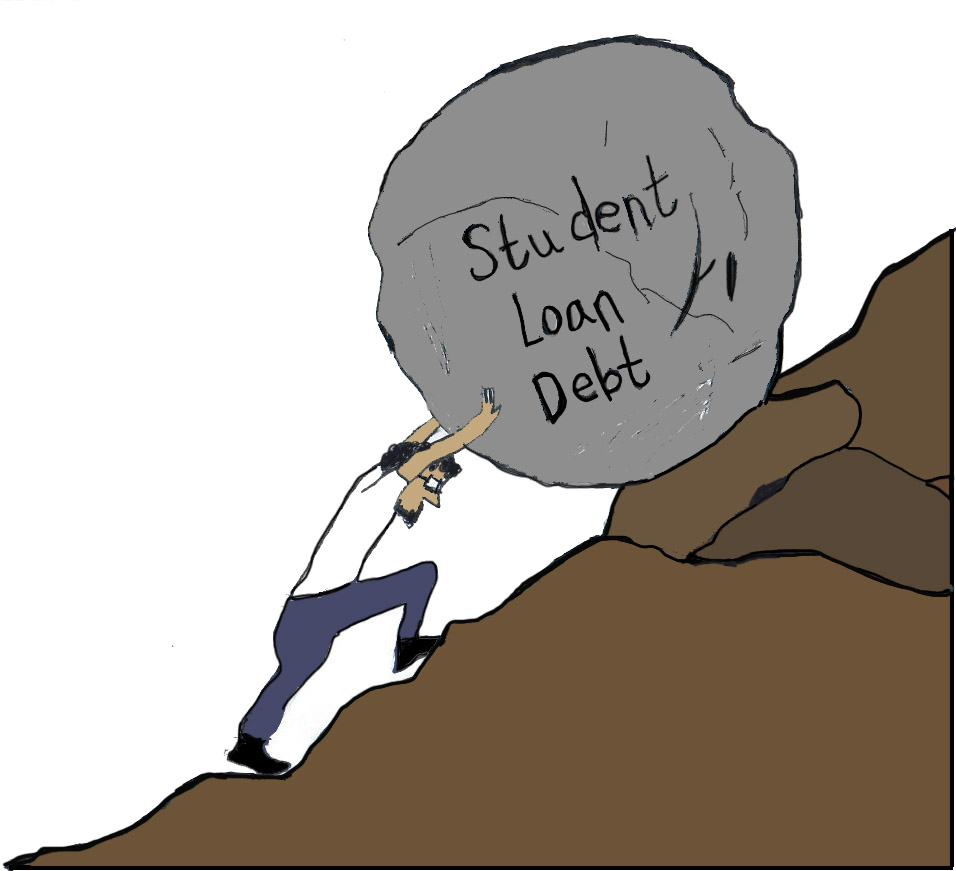Catharine Hasna is an 18-year-old Atlanta resident and a high school graduate from K12 Online academy. Catharine is a hard-core human’s rights activist and a big believer in supporting mental health. Her goal is to major in psychology, apply to medical school and become a psychiatrist.
Hasna started her Common Application last summer, and while reviewing tuition costs and extra expenses (like textbooks and transportation) she came across a sobering truth. Including the scholarships she qualified for, financial aid, and what her parents could contribute, she estimated that she was still several thousand dollars short of what she needed to attend college. She confessed, “It’s really depressing, I’ve looked forward to college for so long. I just found out about a year ago that I won’t be able to afford where I wanted to go.”
You might be thinking that this is what student loans are for — kids with dreams who can’t afford them. But Hasna’s parents are part of the nearly 45 million Americans still in debt from student loans.
“My dad is still paying off his loans almost 20 years later, he doesn’t want me to take money out so I plan to take a few years to work and take just a few college classes,” she said. With encouragement from her family, she has decided to complete her first two years of higher education in community college. To some, her more affordable school might not seem as charming as a four-year college with six basketball courts and an Olympic-sized swimming pool, but for a lot of students community college is just as beneficial as a larger school and can save them a lot of anguish in the future.
It might not be a shock, but Hasna is not alone in her financial fears. It’s no secret that Georgia residents have a desire to seek higher education. In fact, Atlanta is one of the most highly educated cities in the country as almost 40% of Atlanta residents over the age of 25 have completed a bachelor’s degree or higher. However, as college attendance rates rise so does student debt. Atlanta’s student debt crisis has reached an all-time high, and according to Lending Tree, the largest online lending marketplace, our city has the second-highest rate in student debt in the whole country, with a median balance of more than $22,000.
Perhaps one of the reasons we have such a high college debt rate is because Georgia students looking into college are offered several financial opportunities, the most prominent being HOPE (Helping Outstanding Pupils Educationally). Hope is a Georgia Lottery funded scholarship that can provide a variety of aid, from a couple of thousand dollars to a large portion of a student’s tuition. Such scholarships award millions of dollars every year and have proven to be highly useful to Georgia students. However, these scholarships do have their limitations.
HOPE can only be fully applied at Georgia public colleges. Private institutions, such as the one Hasna had hoped to attend, only partially accept HOPE.
Another limitation on HOPE is that if the student’s GPA drops below 3.0 more than once, they can lose all funding. And undocumented students are not eligible.
Despite these weaknesses, the HOPE Scholarship does help Georgia students immensely with their tuition. Yet, for some, there are often financial gaps left to fill, when students are unable to pay what they owe exactly when it’s due. This is where student loans come in.
Borrowing money
Micah Duran, 23, recently graduated from Georgia State University, which he funded with student loans for the last two years. Duran commented on why he chose to be part of the 66% of students from public colleges who graduate with debt from loans.
“My first two years of college, my mom helped me with tuition as best she could, and I did have some money from scholarships, and savings, but eventually I found myself in a place where I needed more financial aid,” said Duran. He consulted his school financial advisor and ended up taking out just over $15,000 in federal loans and plans to pay them back over the next five years. Unlike many college students who struggle to find employment after graduation, Duran was a computer science major ( a field that is flourishing right now) and was able to secure a job just a month after graduation.
The 1.5 trillion dollars of student loan debt are enough to understand why students like Duran try to minimize their amount borrowed, and why teens like Hasna choose to avoid loans entirely, however, fear is usually fueled by lack of knowledge.
There is a ton to know about student loans, but not a lot of people know the facts.
To get an idea of what is important to know I spoke to Ashley Miller, a representative from Wealthy Habits, a nonprofit organization dedicated to educating and informing young people in finance and informed decision making. Miller informed me of three things concerning student loans to be aware of:
- You don’t have to accept the full financial aid package, take only what you need.
- Consider the investment you’re making, if you’re getting a degree in a field that doesn’t typically pay high, don’t take out loans you won’t be able to pay off in the first few years.
- Read the fine print, understand all terms of all loans, make sure you know what you’re signing up for.




